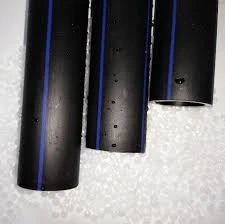Nov . 08, 2024 07:34 Back to list
Exploring the Benefits and Applications of CPVC Plates in Various Industries
Understanding CPVC Plate The Versatile Plastic Solution
In the world of construction and manufacturing, the choice of materials can significantly impact the durability, efficiency, and overall success of a project. Among various materials available, CPVC (Chlorinated Polyvinyl Chloride) plates have emerged as a favored solution, particularly in applications that require resistance to corrosion, high temperatures, and pressure. This article aims to delve into the characteristics, benefits, applications, and considerations of CPVC plates.
What is CPVC?
CPVC is a thermoplastic that is a modified version of PVC (Polyvinyl Chloride). The chlorination process enhances the polymer's chemical properties, making it more suitable for hotter environments and harsher conditions. It is primarily known for its strength and flexibility, making it an ideal material for various applications. CPVC is often used in plumbing, industrial piping, and even in electrical conduits due to its excellent insulation properties.
Characteristics of CPVC Plates
CPVC plates possess several characteristics that make them a superior alternative to traditional materials
1. Corrosion Resistance One of the primary advantages of CPVC is its exceptional resistance to corrosion. This makes it perfect for applications in chemical processing where exposure to aggressive substances is unavoidable.
2. High Temperature Resistance CPVC can withstand temperatures up to 200°F (93°C), making it ideal for hot water distribution systems and other high-temperature applications.
3. Durability CPVC plates are designed to withstand significant impact and stress, ensuring longevity and reduced maintenance costs.
4. Low Thermal Conductivity CPVC has low thermal conductivity, which means it can help maintain temperature for liquids flowing through pipes or any contained systems, improving overall energy efficiency.
5. Non-toxic CPVC is a safe choice for potable water applications as it does not leach harmful chemicals, ensuring safe drinking water.
Benefits of Using CPVC Plates
The benefits of utilizing CPVC plates in construction and manufacturing are extensive
1. Lightweight Compared to metals and other materials, CPVC is lightweight, which simplifies handling, installation, and reduces transportation costs.
2. Cost-Effectiveness While the initial investment might be higher than some alternatives, the durability and low maintenance requirements of CPVC often lead to cost savings over time.
3. Versatile Fabrication CPVC plates can be easily cut, shaped, and fabricated to meet specific project requirements, allowing for greater design flexibility.
cpvc plate

4. Environmental Impact With a lower carbon footprint during manufacturing compared to other materials, CPVC is a more environmentally friendly choice.
5. Ease of Installation The lightweight nature of CPVC, along with its compatibility with standard tools and processes, facilitates a quicker installation process.
Applications of CPVC Plates
Given their advantageous properties, CPVC plates find applications in a variety of sectors
1. Plumbing Commonly used for both residential and commercial plumbing systems, especially for hot and cold water lines.
2. Chemical Processing Used extensively in the chemical industry to transport corrosive materials safely.
3. Architectural Applications CPVC plates can be used in architectural panels and building facades due to their aesthetic versatility and performance characteristics.
4. Electrical Insulation Because of its excellent insulating properties, CPVC is also used in electrical applications, such as conduits and protective coverings.
5. Food Processing CPVC’s non-toxic nature makes it suitable for applications in the food industry where food safety is essential.
Considerations When Using CPVC Plates
While the advantages of CPVC plates are substantial, there are considerations to keep in mind
1. UV Stability CPVC can be susceptible to UV damage, so proper protective measures should be taken when used in outdoor applications.
2. Temperature Limitations While CPVC is resistant to high temperatures, exceeding its limits could lead to failures.
3. Compatibility Not all adhesives and solvents work well with CPVC, so ensure compatibility when working with sealants or coatings.
Conclusion
In summary, CPVC plates are a versatile and reliable material choice in many applications ranging from plumbing to construction. With their impressive range of benefits—ranging from corrosion resistance to ease of fabrication—they stand out in today's materials market. As industry standards evolve, the use of CPVC is expected to grow, making it a key player in ensuring efficient and sustainable construction practices. Whether you are a contractor, engineer, or project manager, understanding the advantages of CPVC plates could enhance your decision-making in material selection, leading to successful project outcomes.
-
High-Quality PPR Pipes and Fittings Durable ERA PPR & PVC PPR Solutions
NewsJul.08,2025
-
Black HDPE Cutting Board - Durable, Non-Porous & Food Safe HDPE Plastic Cutting Board
NewsJul.08,2025
-
High-Quality CPVC Panel Durable HDPE & PVC Panels Supplier
NewsJul.08,2025
-
Double PE Welding Rod Supplier - High Strength, Durable & Versatile Welding Solutions
NewsJul.07,2025
-
High-Quality PVC-O Pipe Supplier Durable 75mm PVC Pipe & Connections Leading PVC Pipe Company
NewsJul.07,2025
-
HDPE Drainage Pipe Supplier – Durable & Corrosion-Resistant Solutions
NewsJul.06,2025

